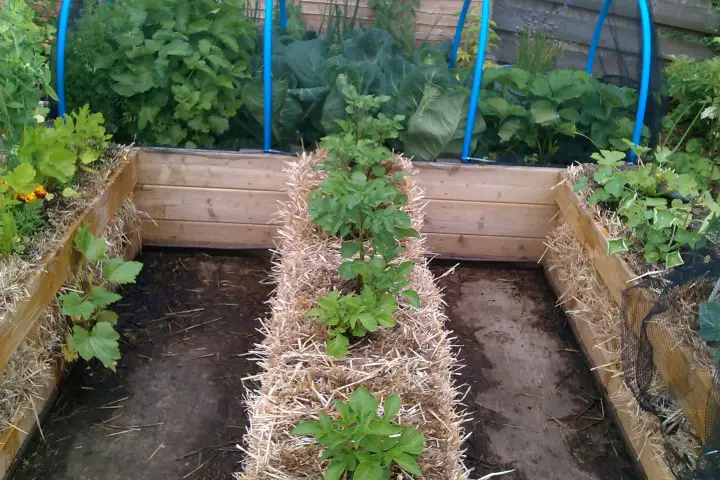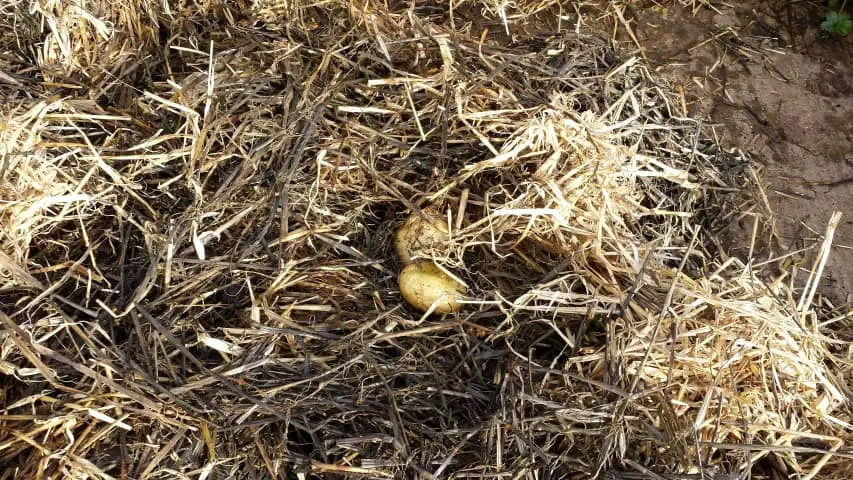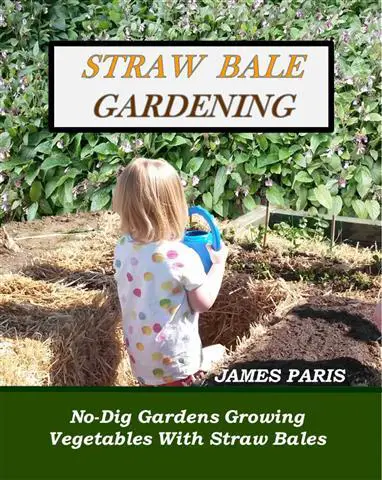Straw bale gardening has peaked the interest of many vegetable gardeners over recent years, and with good cause as it can be a very effective way to grow vegetables, especially where you have poor soil conditions.
However the question of longevity is perhaps the only real downside to this vegetable growing method as the straw bales do not last forever and have to be replaced regularly.
In general terms a straw bale will only last for 1 or 2 years depending on the type of vegetables you plan to grow. For instance growing potatoes in straw bales means that the bale has to dismantled at the end of the first season to harvest the crop. This means that the straw bale garden when planted with potatoes will only last for 1 year.
The fact is that straw bales begin to lose their integrity after the first year, and have a tendency to fall apart as they degrade and start turning to compost – which makes them excellent for soil amendment when mixed with garden soil.
For this reason I normally plant potatoes in the second year, then when I harvest the spuds I put the depleted straw into the compost heap to act as ‘brown’ material for the compost.
However there is another way to do things, which will extend the life of the bale indefinitely and make good use of this natural process…
Extending the life of a straw bale garden
As you can see if you grow potatoes in a straw bale – especially in the first year – then it is indeed short-lived. However for other vegetables such as legumes or brassicas and other shallow-rooted veggies, then this can definitely be extended to 2 years – but there is another effective way to extend the life of straw bales even further than 2 years.
Surround your bales in a wooden(or metal?) framework. This not only has the effect of keeping the bales together, but in effect creates a raised bed filled with partially compost straw bales.
This means that for the first 2-3 years you can plant out as you would in a straw bale, however as it reaches its third year and the bale is starting to break down into the bed, you can top-off with a compost mix.

This in effect means that your straw bale has a second lease of life – and it makes a cheap infill for your raised bed!
By re-purposing the straw bale as it degrades, you can in effect make it last forever – or at least for the lifetime of your raised bed frame, as long as you keep topping-off with fresh compost at the beginning of each growing season.
Does straw bale gardening really work?
Absolutely! If conditioned properly (see this link) there is no reason why growing veggies in straw bales should not work. After all you are giving the plants all they need to thrive which is water, nutrients, and sunshine.
The fact that your growing medium is straw is ‘neither here nor there’, as they say. If the other conditions are in place then you can effectively grow almost anything.
The biggest problem most gardeners have with this method is that they do not condition the bale properly at the beginning, and then do not plant their plants in a large enough ‘plug’ of compost. This leads to a nutrient deficiency which is evidenced by weak failing plants.
Straw bales are particularly useful if the garden soil in your area is not good quality. This method is definitely cheaper than having to replace a load of topsoil. It is also cheaper than a raised bed system as it has no framework attached – unless you make use of the suggestion above to extend the life of your straw bales!
Can you use hay bales instead of straw?
Hay and straw are 2 totally different products, even though many writers seem to think they are the same – there is a world of difference.
Straw is the by-product of cereal crops such as wheat, barley or oats. The straw has zero nutritional value for plant or beast, and is normally used for animal bedding or even thatching roofs.
Hay on the other hand is grasses and/or wild flowers grown specifically for use as an animal feed. This is full of nutrients and is used as a winter feed for animals after it is dried out and stored in a dry barn.
It can also be mixed with molasses and other minerals to form silage and act as a winter feed especially for dairy cattle as it enriches the milk yield.
So yes, hay can be used for gardening as well though it has a tendency to sprout masses of grass and weeds in the process, it is also susceptible to moulding.
The upside however is that hay does not have to be enriched with nitrogen like straw, as it is already packed with natural nitrogen in the grasses it is made with.
The last straw?
Growing vegetables in straw or hay bales can be very productive – and quite a talking point with friends and family! However just like any other no-dig gardening method, there are several steps that have to be followed if your efforts are not to be in vain.
The time a straw bale garden will last is after all immaterial if it is not producing the goods to begin with!
To avoid disappointment it is always best to do your ‘’due diligence’ and make sure that it is the right method for you.
Please feel free to check out some of our other articles on straw bale gardening, where just about every aspect of this and other no-dig garden methods are gone over in fine detail to help ensure you a successful harvest.
Like to know more about Straw Bale gardening? Check out our book on the subject here. ..
..


